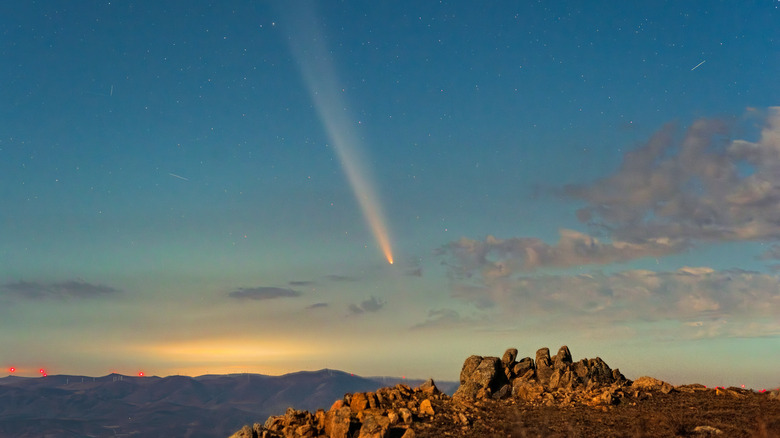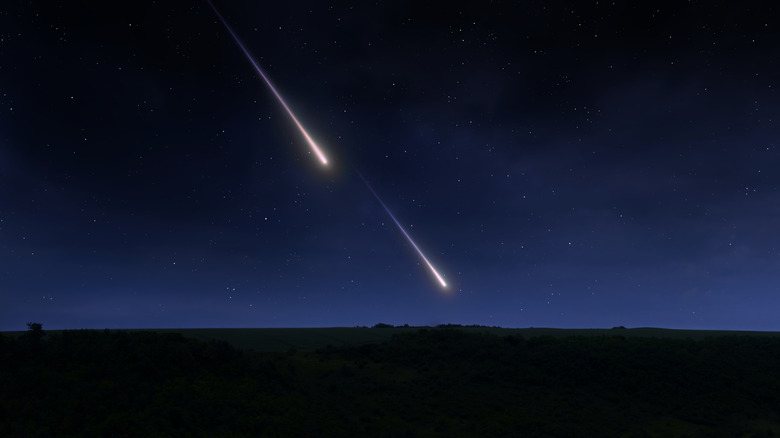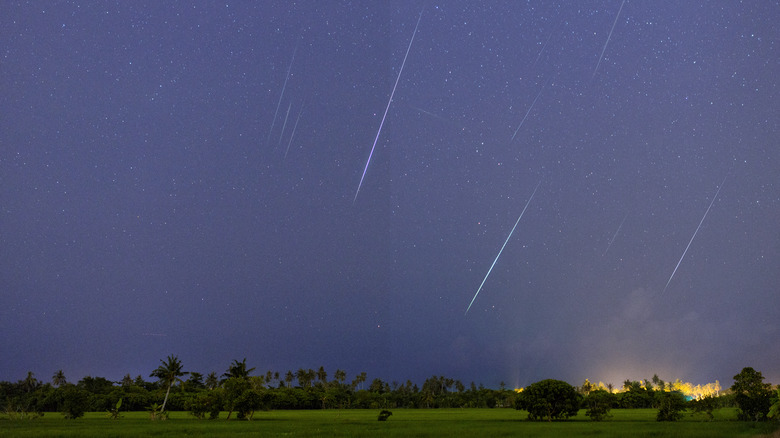Here's What Happens When Meteors Enter Earth's Atmosphere
If you have seen a bright light streak across the sky, you have likely seen a meteor. Meteors are rocks from space that hit Earth's atmosphere and are commonly referred to as falling stars or shooting stars. They are easier to see at night, and meteor showers can make spectacular light shows.
The term meteor is used when a space rock, often caused by a collision of two asteroids, enters Earth's atmosphere. This differentiates it from a meteoroid, which is a rock that is only in space, and a meteorite, which is a meteor that has made it all the way to the ground.
When a meteor enters Earth's atmosphere, it burns. Most burn away completely before ever reaching the ground. What they are made of can change the color they burn, such as meteors made mostly of iron appearing yellow. Meteors are also classified based on their behavior and size and include earthgrazers, fireballs, bolides, and superbolides.
What happens when a meteor enters the atmosphere?
Meteors go from easy traveling through the vacuum of space to hitting Earth's atmosphere at tens of thousands of miles per hour. The air in front of the meteor compresses so fast that it can heat the gases around the meteor up to 3,000 degrees Fahrenheit. This is what causes meteors to burn and become visible to us.
Meteors typically hit Earth at an altitude of between 50 and 75 miles, also known as Earth's mesosphere. Meteors begin to burn away as they travel through the atmosphere. They will only survive the trip if they are large enough to still maintain some mass after the trip burns most of their bodies away.
The materials a meteor is composed of can impact the color it appears as it burns across the sky. Meteors with a lot of iron may look yellow, whereas ones with a lot of calcium may look purple.
Different classifications of meteors
Meteors known as earthgrazers streak through the sky with long tails. Though some are destroyed in the atmosphere, others are able to make it back out into space because of the angle of their entry. A brighter and longer-lasting version of earthgrazers are known as fireballs. Massive fireballs light up the sky and are the most common type of meteor seen.
Larger than fireballs are bolides that produce a sonic boom as they enter the atmosphere. Bolides are also marked by the fact that they explode in the sky. Sometimes the explosion is big enough that people on the ground can hear it and even feel its shock wave to a mild extent.
The most impressive and most dangerous of all the meteors are the superbolides. Their explosions are so large that they can cause damage to property, animals, and people. Their shock waves can shatter windows, and the light from their explosion can be bright and intense enough to cause eye damage and burn the skin.


